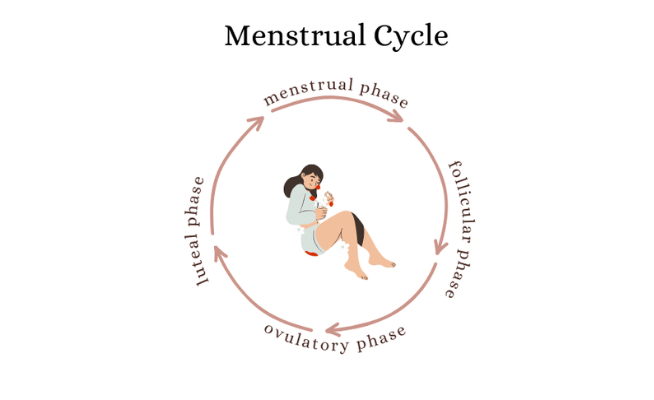
Have you experienced two periods in one month? When both periods fall within the same 30 to 31-day window, it may raise questions about what’s normal and what’s not.
If you’re used to a regular menstrual cycle, it may seem confusing or even alarming the first time you have two periods in one month. While the cause can be something temporary and treatable, such as stress or a new medication, it can also signal an underlying condition like uterine fibroids.
Let’s explore the potential reasons behind experiencing two periods in one month, the symptoms to watch for, and when to consult a medical professional. Receiving a diagnosis helps clarify whether these changes are a normal variation or a sign of a more serious health issue.
What is the Typical Duration of a Woman’s Period?
A typical menstrual period lasts between three and eight days, although the overall menstrual cycle is usually 21-35 days on average. During a regular menstrual period, a woman usually loses between two and three tablespoons (30-40 mL) of blood, while heavier periods result in the loss of approximately 80 mL of blood.
The rise and fall of estrogen and progesterone regulate this natural process of menstruation that prepares the uterus for a potential pregnancy each cycle. It is common to experience variations to this cycle, especially during adolescence, after childbirth, or as menopause approaches.
Is It Normal to Have Two Periods in One Month?
Having two menstrual cycles in one month can be normal, especially for individuals with shorter menstrual cycles. For instance, someone with a 21-day cycle may start their period at the beginning of the month and again before it ends.
However, if you notice repeated or sudden double periods, it may signal an underlying issue such as hormonal shifts, thyroid changes, perimenopause, uterine polyps, or . In these cases, a medical evaluation is recommended to determine the cause and ensure your cycle is healthy.
Can You Ovulate Twice in One Month?
Ovulation typically only happens once per menstrual cycle, even if you experience two periods in one month. Having two periods in a month does not mean your body releases an egg twice. Instead, it usually indicates irregular bleeding caused by hormonal changes, stress, thyroid issues, or other disruptions in your cycle.
While the ovaries can release two eggs during the same ovulation window, this happens within a short timeframe and is what can lead to fraternal twins. But that’s still considered one ovulation event, not two separate ones. If you notice two periods in a month on a regular basis, it’s more likely linked to an underlying cycle imbalance rather than double ovulation.
Since it is possible to have two periods in one month, it is common to question whether ovulation can occur twice within a month. Ovulation only happens once per menstrual cycle, so having two periods in a month doesn’t necessarily mean you ovulated twice. Ovaries can release two eggs during a single ovulation window, potentially leading to fraternal twins, although these eggs are released within the same short timeframe, not on separate days.
When bleeding occurs more frequently than expected, it’s usually linked to hormonal irregularities or other cycle disruptions, rather than ovulation.
What Causes a Woman to Menstruate Twice in a Month?
There can be a few reasons why women may experience two periods in one month. Identifying the cause through evaluation and screenings can help doctors determine the best way to regulate a cycle or provide proper treatment to prevent long-term complications.
Uterine Fibroids
Uterine fibroids are noncancerous growths that develop in or on the uterus, disrupting a regular menstrual cycle. They often cause prolonged or heavy bleeding and can lead to two periods in one month by exerting pressure on the uterine lining. This pressure disrupts the uterus’s ability to contract properly, preventing it from stopping the bleeding. Additionally, fibroids can form more blood vessels, resulting in heavier periods and spotting between cycles.
In addition to irregular bleeding, fibroids can lead to pelvic pressure, frequent urination, bloating, or discomfort, making it important to seek medical evaluation if these signs occur.
If you’re unsure whether fibroids are causing your symptoms, our fibroid symptom checker can help determine if it’s time to consult a fibroid specialist.
TAKE OUR FIBROID SYMPTOM CHECKER
Adenomyosis
Adenomyosis is a condition where endometrial tissue grows into the uterus’s muscular wall, leading to heavy, prolonged, or more frequent bleeding. This bleeding can resemble having two periods in one month, often accompanied by pelvic pain, cramping, or discomfort during menstruation. Sometimes it may even cause an enlarged, tender uterus.
Starting or Stopping Birth Control
Changes in hormonal contraceptives can disrupt your cycle and trigger irregular bleeding. When beginning a new birth control method, it’s common to experience breakthrough bleeding or spotting as the body adjusts. For instance, a hormonal IUD may cause irregular periods for the first two to six months, while an implant may cause changes within the first three months.
Similarly, skipping pills, missing doses, or switching methods can lead to unexpected bleeding that leads to two periods in one month.
Perimenopause
Age can also cause two periods in one month, including phases like perimenopause. Perimenopause, the transitional phase to menopause, typically occurs between the late 30s and mid-40s. Decreasing levels of estrogen and progesterone cause irregular ovulation and menstrual cycles, such as having a period every two weeks or skipping periods. These periods may be shorter, irregular, or heavier, often occurring in conjunction with symptoms such as hot flashes or mood changes.
Thyroid Dysfunction
Both overactive (hyperthyroidism) and underactive (hypothyroidism) thyroids can interfere with the hormones regulating the menstrual cycle. This imbalance may lead to having a period twice a month or missed periods, along with fatigue, weight changes, and mood shifts.
Miscarriage or Early Pregnancy Loss
A miscarriage or early pregnancy loss can sometimes appear as light bleeding or spotting after a missed or late period. This spotting or light bleeding can occur very early, often before individuals even realize they’re pregnant. If you suspect this might be the cause, a medical evaluation is essential for proper care and support.
Hormonal Imbalances
Fluctuations in estrogen and progesterone can disrupt ovulation, shortening the menstrual cycle and resulting in two periods in one month. These imbalances are common in adolescents, individuals with PCOS, or those approaching menopause. Factors such as stress, poor sleep, or sudden weight changes can also affect hormone levels and menstrual regularity.
Infection or Inflammation
Pelvic inflammatory disease (PID) or other uterine infections can disturb the normal menstrual cycle. These conditions often present with pelvic pain, unusual discharge, or fever, and may trigger unexpected bleeding mimicking two periods in one month.
When to See a Doctor About Two Periods In One Month
Persistent cycle changes should always be evaluated by a specialist, as having two periods in one month accompanied by pain, heavy clots, or fatigue is commonly linked to uterine conditions like fibroids or adenomyosis. An early diagnosis helps confirm the cause and allows for more treatment options.
Schedule a consultation at USA Fibroid Centers, which offers advanced diagnostic imaging and personalized consultations to identify the cause of disruptive symptoms.
Schedule a Consultation Online Now
Treatment for Irregular Periods Caused by Uterine Conditions
When conditions like fibroids or adenomyosis are responsible for disruptions like two periods in one month, treatment can provide a solution for a more consistent menstrual cycle. USA Fibroid Centers offers non-surgical procedures to help restore regular menstrual cycles. Uterine fibroid embolization (UFE) targets fibroids by blocking their blood supply, shrinking them without the need for surgery, and helping to relieve heavy or frequent bleeding. This procedure is also known as uterine artery embolization (UAE) when used to treat adenomyosis by shrinking the abnormal growth of uterine tissue.
Getting Answers and Care at USA Fibroid Centers
If you have two periods in one month or are experiencing frequent or heavy bleeding, schedule a consultation with USA Fibroid Centers to get answers and explore advanced, minimally invasive treatment options tailored to your needs.
FAQs: Period Frequency & Reproductive Health
Is spotting between periods the same as having two periods?
Spotting between periods is not the same as having two periods in one month. The primary difference between spotting and periods is the amount of blood, as spotting typically causes lighter bleeding, whereas periods have a heavier flow in comparison.
Does stress cause two periods in a month?
Stress can cause two periods in a month by shortening your menstrual cycle. Stress can lower estrogen levels, resulting in shorter or longer menstrual cycles and more frequent or skipped periods.
Are two periods in one month dangerous?
Having two periods in one month isn’t dangerous, especially if it happens irregularly. However, if you continuously have a period twice a month, it could be a sign of an underlying condition, such as uterine fibroids, hormonal imbalances, or infection. Medical evaluation is recommended when symptoms persist.




